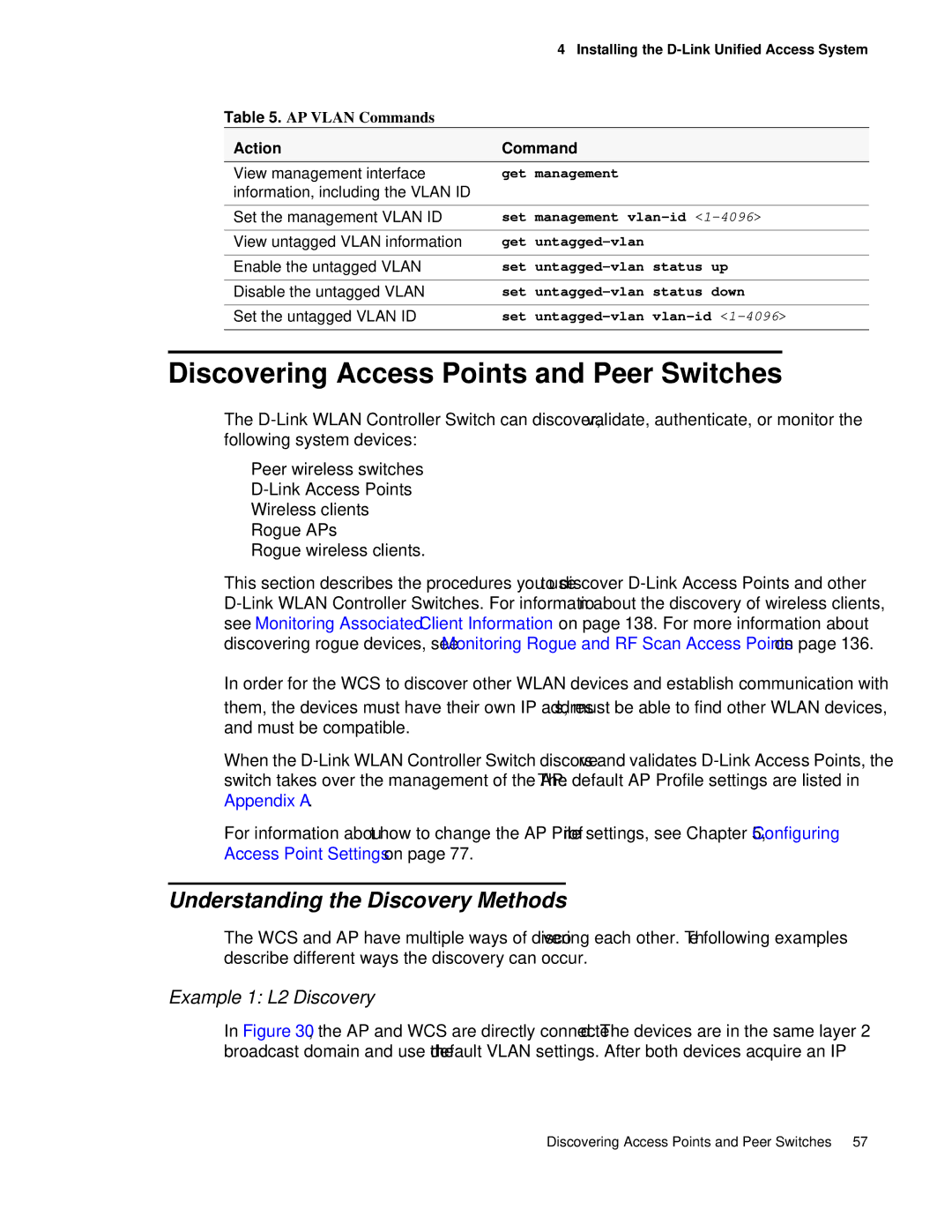
| 4 Installing the |
Table 5. AP VLAN Commands |
|
Action | Command |
View management interface | get management |
information, including the VLAN ID |
|
Set the management VLAN ID | set management |
View untagged VLAN information | get |
Enable the untagged VLAN | set |
Disable the untagged VLAN | set |
Set the untagged VLAN ID | set |
Discovering Access Points and Peer Switches
The
•Peer wireless switches
•
•Wireless clients
•Rogue APs
•Rogue wireless clients.
This section describes the procedures you use to discover
In order for the WCS to discover other WLAN devices and establish communication with
them, the devices must have their own IP address, must be able to find other WLAN devices, and must be compatible.
When the
For information about how to change the AP Profile settings, see Chapter 5, “Configuring Access Point Settings” on page 77.
Understanding the Discovery Methods
The WCS and AP have multiple ways of discovering each other. The following examples describe different ways the discovery can occur.
Example 1: L2 Discovery
In Figure 30, the AP and WCS are directly connected. The devices are in the same layer 2 broadcast domain and use the default VLAN settings. After both devices acquire an IP
Discovering Access Points and Peer Switches 57
